Hélène Fauquet, resolution in space
Reflective things absorbing light and soft surroundings: an open-ended reading of the work of Hélène Fauquet
Hélène Fauquet refracts what’s around. Her UV-prints on wood of found photographs show 1960s bubble mirrors and decorative stained glass in life-size with titles like “Deviance as a Result of Stagnation”, “Obscure Purpose” and “Echo”. Fauquet interlocks a light spectrum and your presence in objects and prints. Her mirror dome-shaped glass sculptures morph as you relate to them on the floor of the gallery, your movement directing the reflected shapes. Everything becomes multifaceted as the light and geometry of her different surfaces cut up.
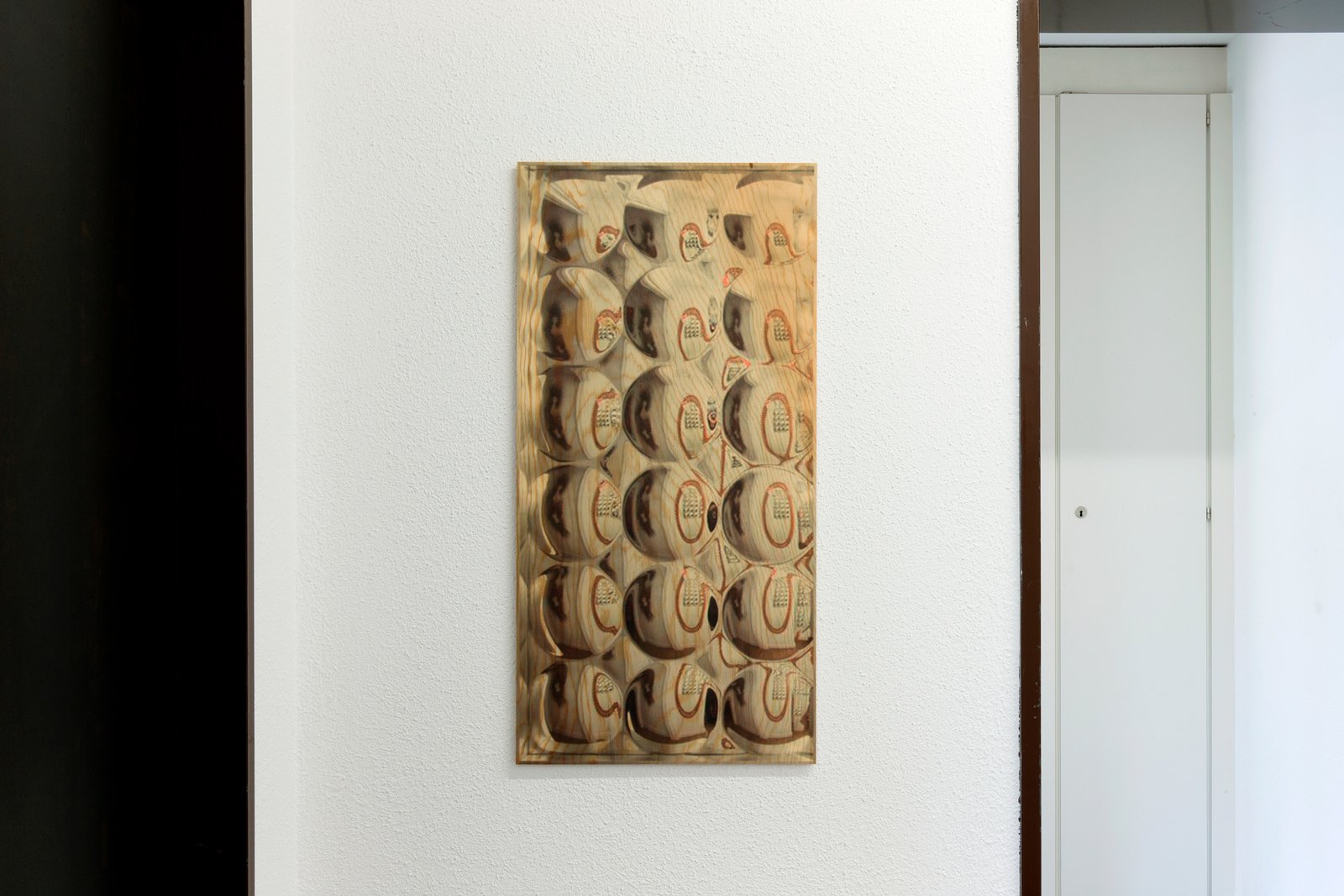
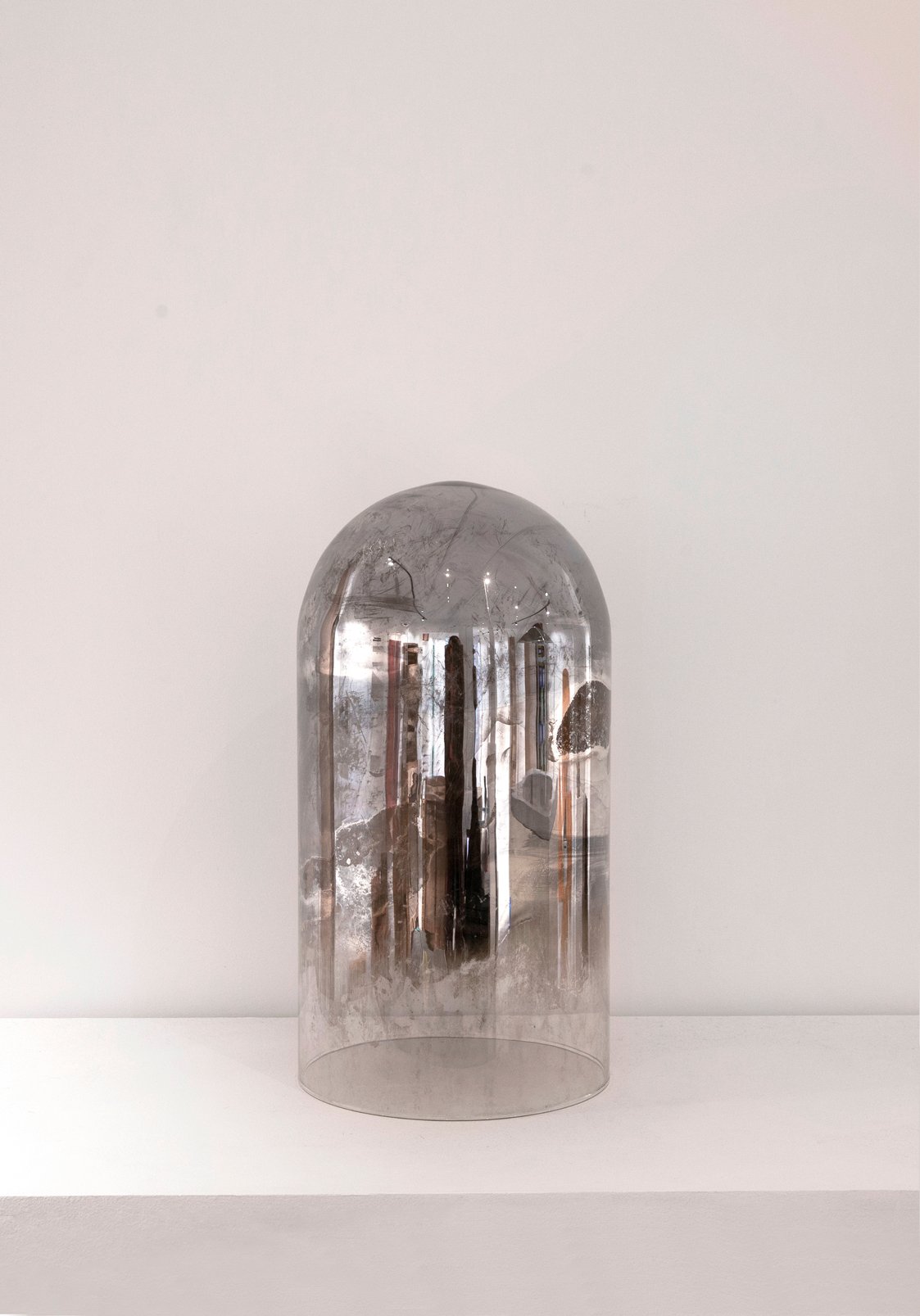
The cold stained glass’ little edges magically deform as you navigate the environment through this prism. In Fauquet’s prints, the single-point perspective true to photography, fixes a particular point from which to view the abstracted environment. Remember being a child in a stranger’s house, face maybe pressed against the stained window, understanding the different trees that line the garden. There is a memory connotation to these windows, and a simple play of light, colour and geometry that attract the eye. Fauquet prints the objects in a one-to-one scale, showing them and their broken up, unidentifiable surroundings as they used to be.
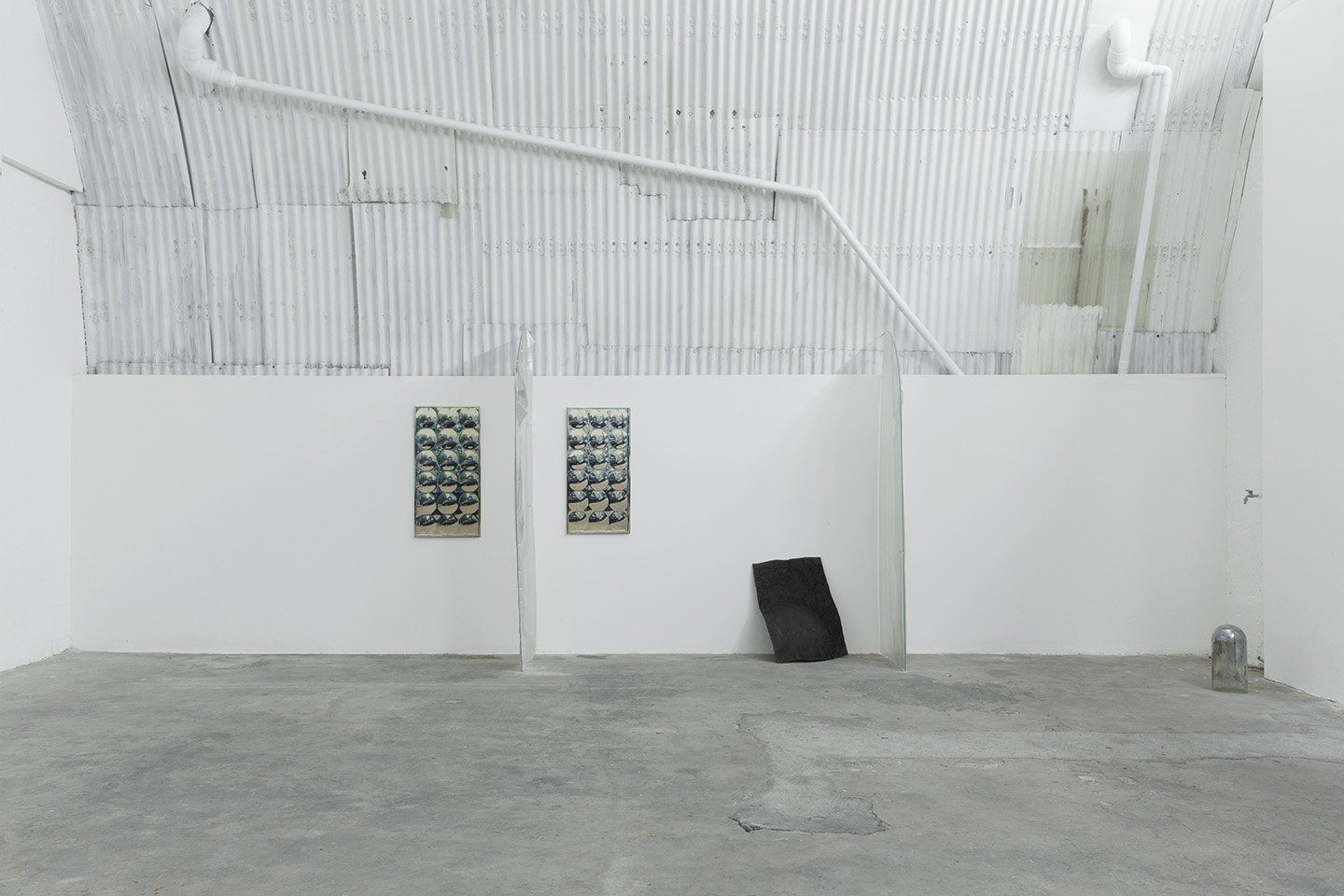
UV-rays on wood
Working with found photographs, the artist remains somewhat enigmatic about their origin. Sometimes her titles are unsourced fragments too. Fauquet notes how “the geometric designs of stained glass are often a copy of a copy, to the point where their source is lost.” She seems conscious of the image’s poor quality, and how it soaks into the wood of its support. She gestures a ray and pigment coming together on a surface. The technique of UV-printing is generally used for advertisement, as it allows printing on thicker materials. “The light gets fixed— rays of the image are fixed while printing them,” says Fauquet, describing how the ink of the sometimes pixelated found picture spreads on and in the untreated wood, giving the images a velvety feel. Wood, as a chosen carrier for the images, serves as a primary paper and a classical screen. It also carries the reference of being a material used to block the view from a window. The patterns in the wood relate to the printed image and merge in prints that mimic the objects depicted. “They act more like props than trompe l’oeil, as they sort of act for something else in the context of an exhibition space,” says the artist. The longer our conversation on her practice continues, the more every component of her work becomes an origami of thoughts, elegantly folding in and on itself.
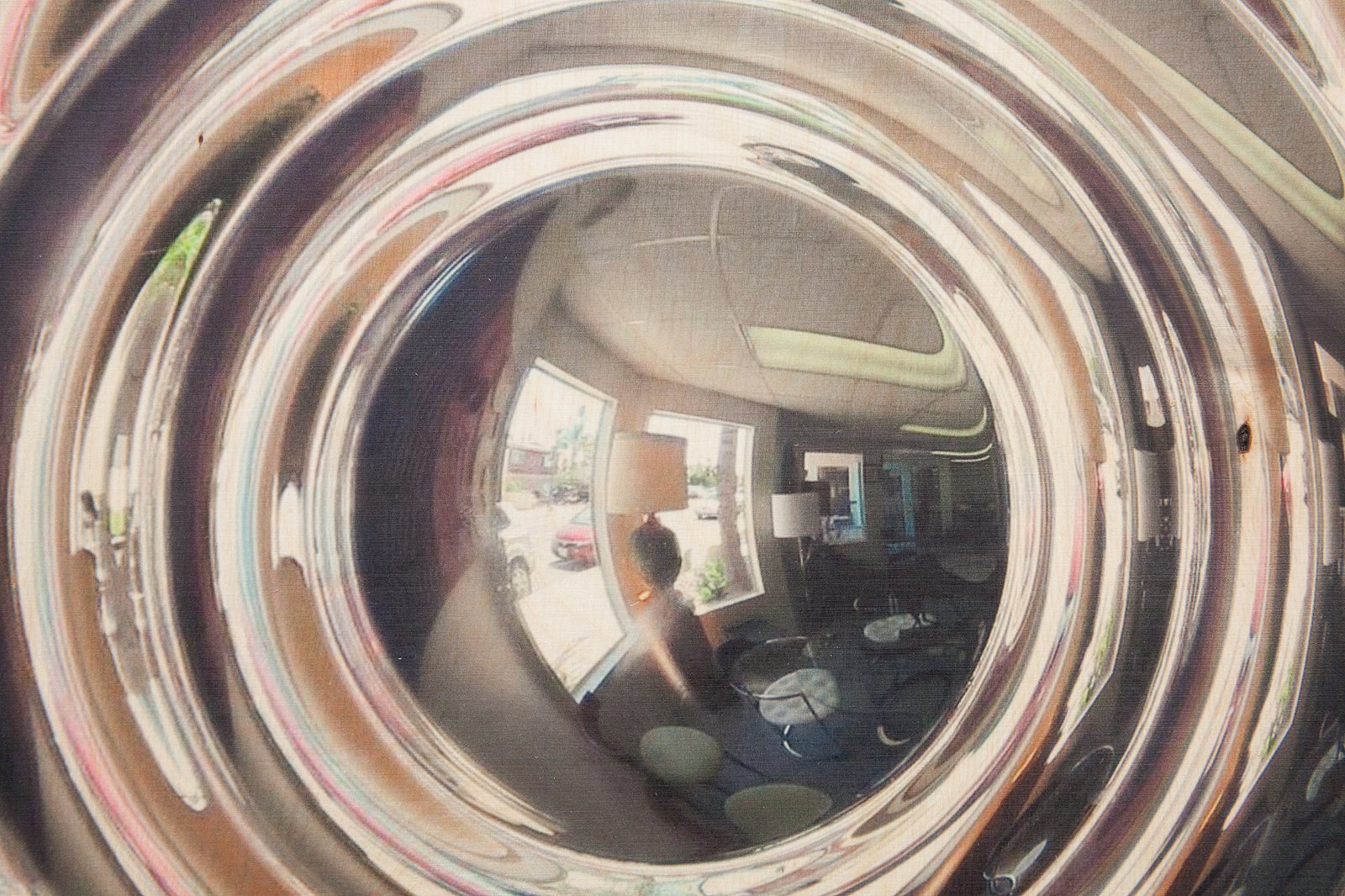
There is a tactile quality to the prints; the ink melted in the soft wood, the temperature of the imagined touch of glass, the experience of the context we know these stained glass interiors from. She speaks of “resolution in space”, thinking of 60s pop bubbly mirrors as “surfaces that cannot be printed”. Her spheric mirror sculptures rendered fluid the exhibition space around it. Do we again see the object only through its surroundings? The element of extraction and reconstruction recurs in Fauquet’s practice. Between the history of the depicted glass, its source, a possible edit, the interaction of the wood and the print, and their placement in an exhibition space: many subtle rearrangements and decisions are built upon the found image. Crossing over conceptual thinking on crafted decorative interior elements, the environment influences the form and vice-versa, both formally and otherwise. The non-neutrality of spaces and customised interiors are pointed out in the work. Printed this way, the compositions become somehow more legible. Their graphic aesthetics of some may remind you of Paul Klee and the 50’s French animation Les Shadoks.
Waterglass exhibitions, associative arrangements
The way Fauquet’s works are arranged on the wall, more specifically in her last show monde ouvert at Édouard Montassut in Paris, is what she calls associative. They look like open computer files on a desktop. Hanging them at unexpected heights again changes the way we look at them and their geometry. They all the more lose their sheer window reference and instead appear “as if they have their own rules and standards,” as the artist says.
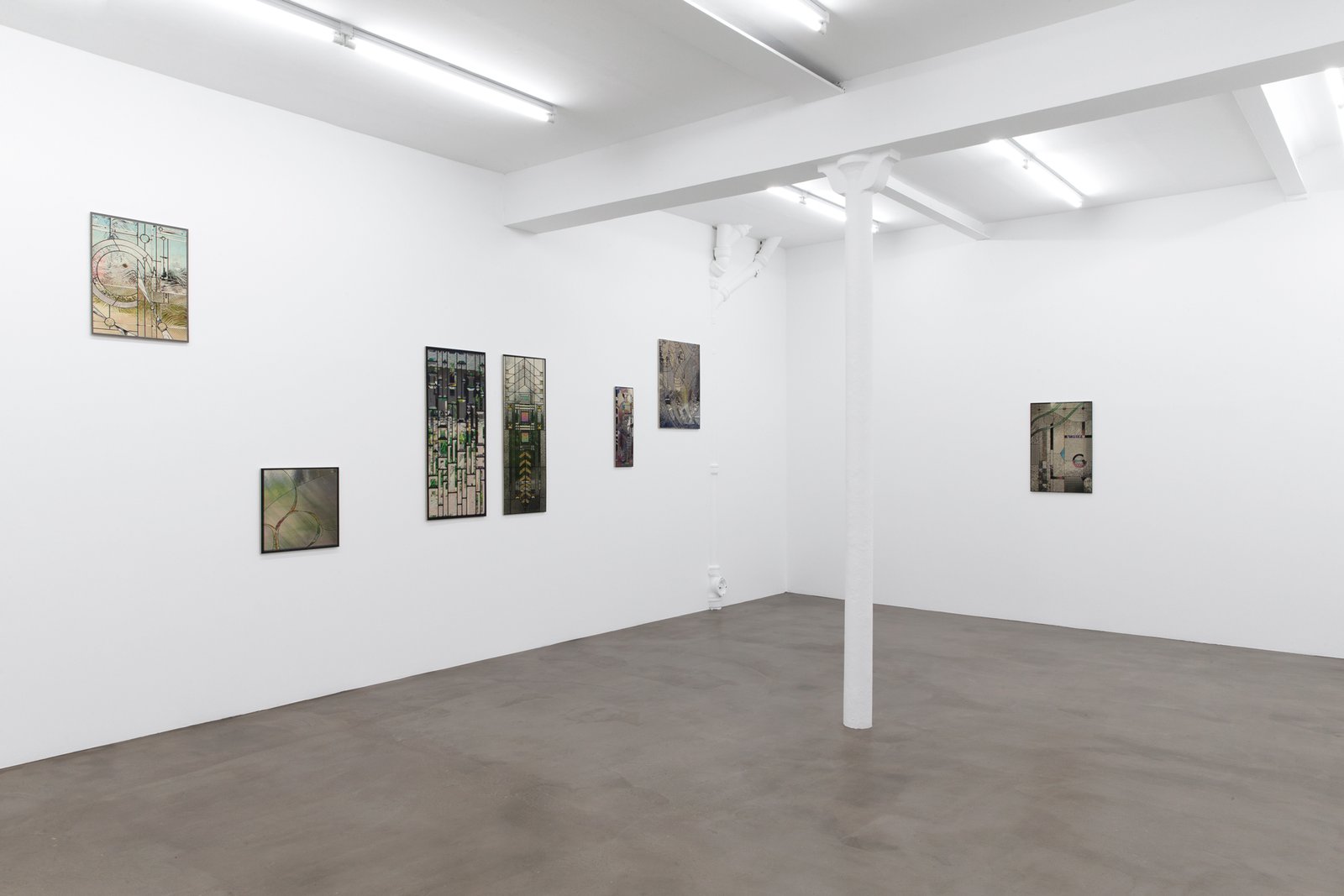
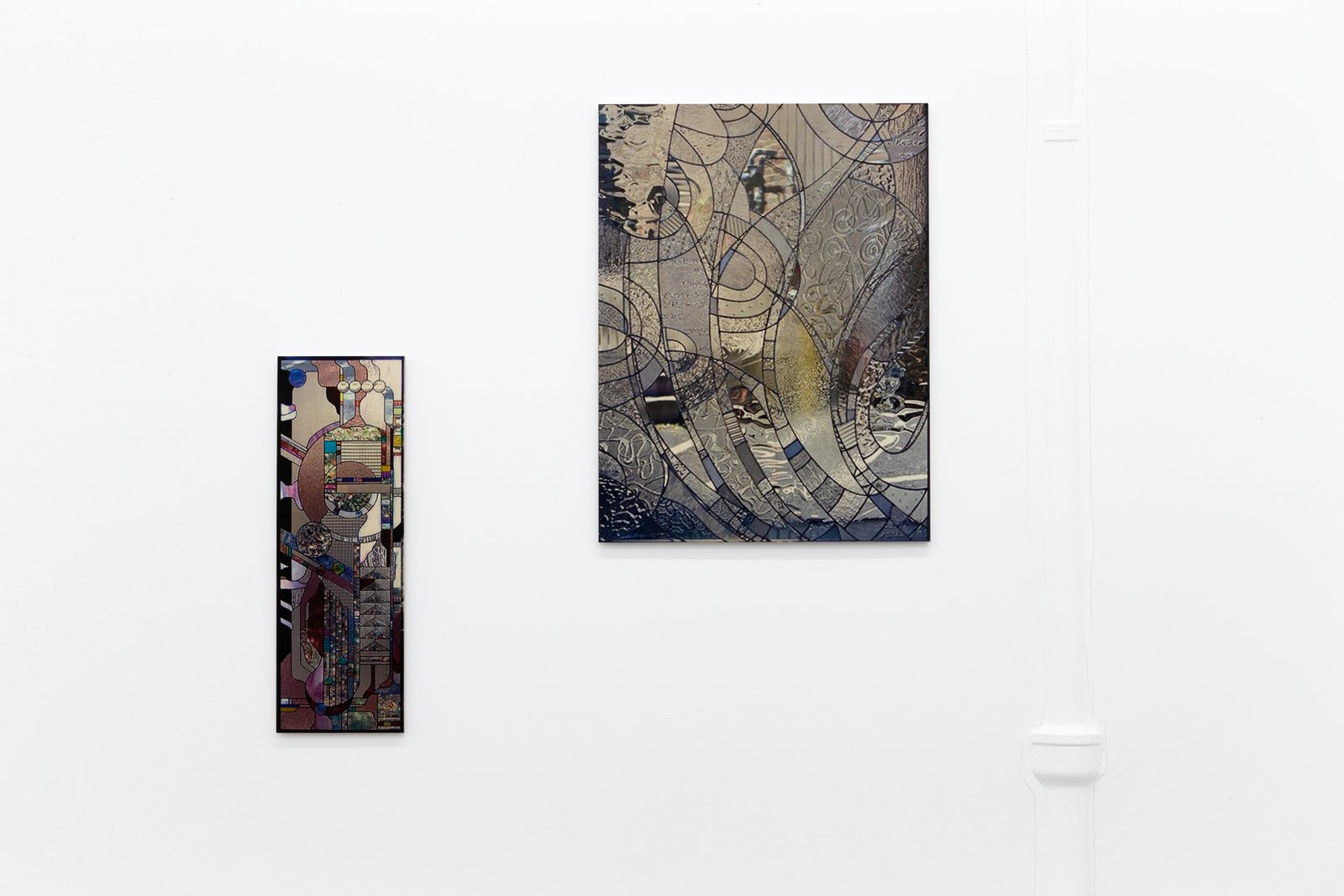
Her windows and sculptures render light and space in a painterly way, breaking up and blending gradient colours. They seem to capture the ambiance and time of day more than an actual outlook. This transformative quality also enhances the double vision their presence as objects brings in an exhibition— as we look at, through, with, and for. The texture of glass varies from water glass, iced granite, feathery textured glue chip or chord vertical lines. The bevelled and glass surfaces translate well in print, and all we see is broken-up light. The bubbly mirror prints recall a fascination one may be triggered having in a moment of hyper-awareness; existence becomes omnipresent, yet precisely situated, as if it were seen from the far edge of a room.
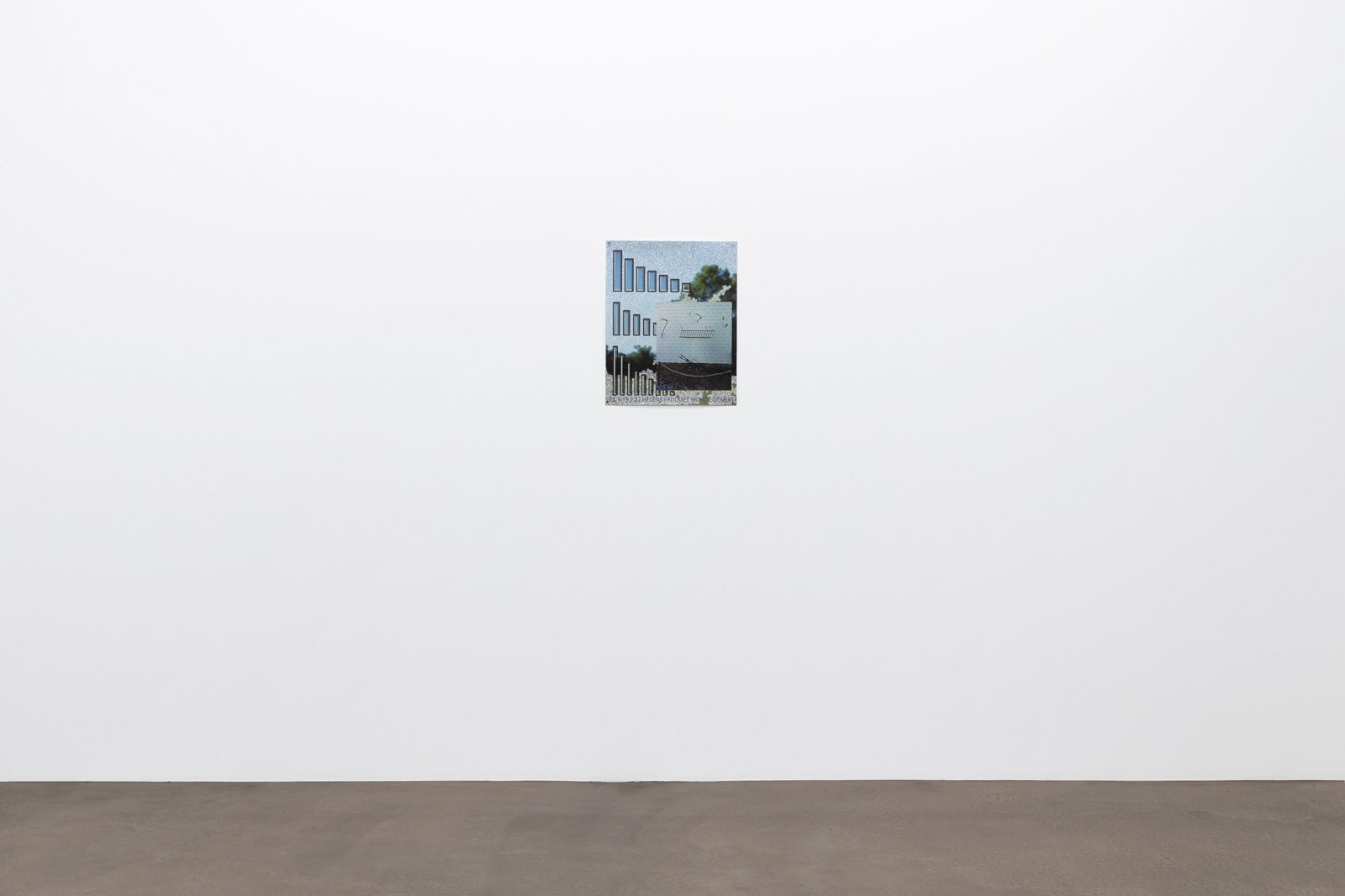
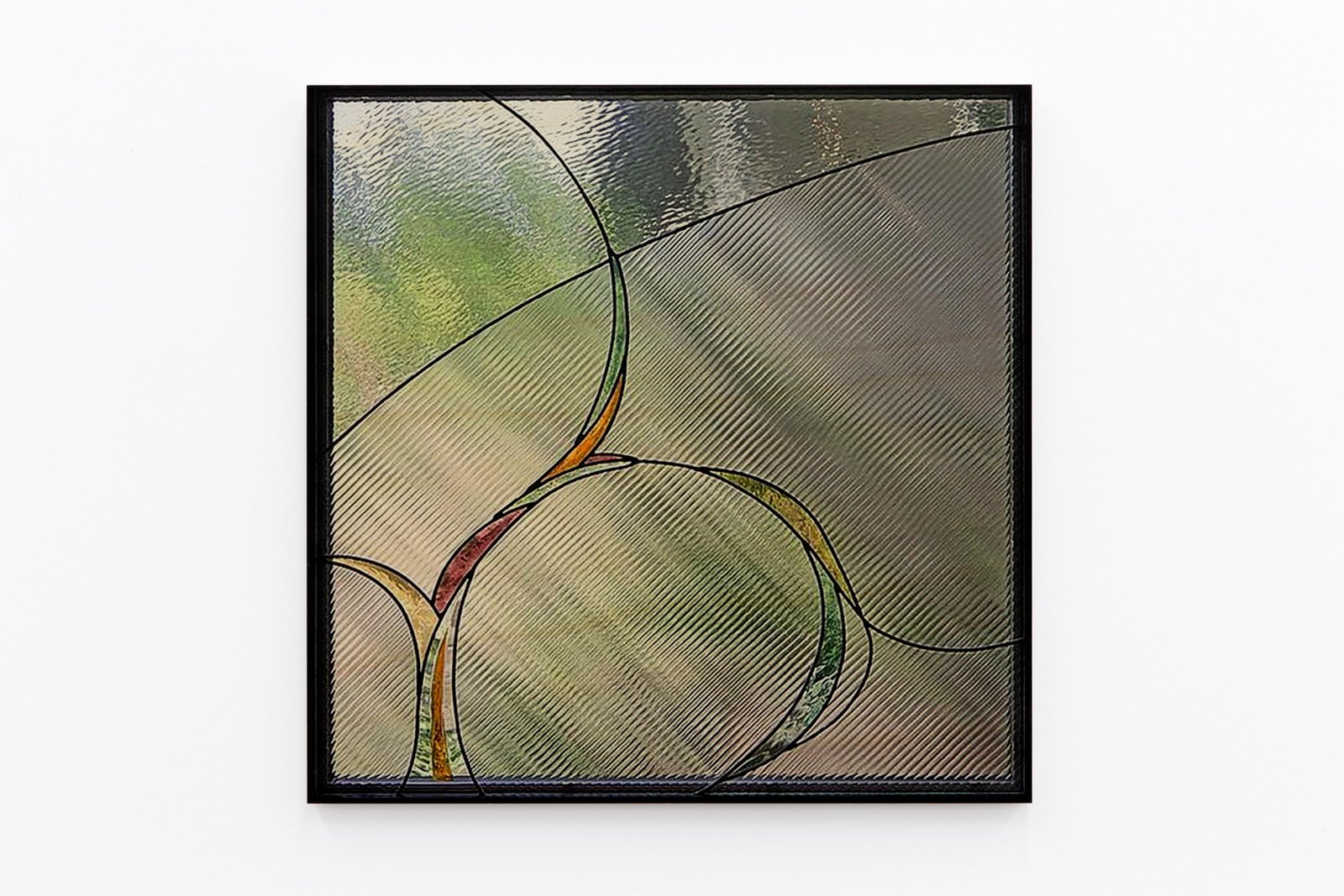
In monde ouvert, the exhibition poster is presented in and as part of the show. This is when all components that make up Fauquet’s work start to whirl and wire, connecting pieces. On the poster there are images of agricultural equipment and primary tools to cultivate the earth; tools to open a pass. They are taken from an educational and decorative display outside a house that operated as an open air museum. The tools and their displacement on the poster (and the poster itself being part of the exhibition), again bear thoughts on function, reproduction and representation.
How much of Fauquet’s practice is about tracing back: how is reading different from retracing and retracting from imagining? Her artwork is ultimately a knot of moving body, two-eyed head, monocled camera and omnipresent surroundings.
April 5, 2022
